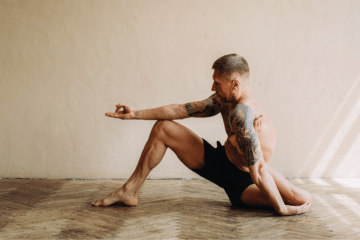In the fast-paced world we inhabit today, finding moments of deep relaxation and tranquility can seem like a luxury. Yet, within the ancient practice of Kundalini Yoga lies a profound pathway to unlocking these states of calmness and rejuvenation.
Rooted in centuries of tradition and spiritual wisdom, Kundalini Yoga offers a unique approach to relaxation that goes beyond mere physical rest, aiming to harmonize the mind, body, and spirit.
In this article, we delve into the transformative relaxation benefits of Kundalini Yoga and explore how its techniques can help individuals achieve profound states of inner peace and well-being.
Understanding Kundalini Yoga
Kundalini Yoga is a dynamic and powerful form of yoga that incorporates various techniques including breathwork (pranayama), movement sequences (asanas), chanting (mantras), meditation, and deep relaxation.
Central to Kundalini Yoga is the concept of Kundalini energy, described as a coiled serpent lying dormant at the base of the spine.
Through the practice of Kundalini Yoga, this potent energy is said to be awakened and guided through the body’s energy centers or chakras, leading to heightened awareness, spiritual growth, and profound relaxation.
The Role of Deep Relaxation
At the heart of Kundalini Yoga lies a deep reverence for the practice of relaxation. Unlike conventional notions of relaxation that focus solely on physical rest, Kundalini Yoga emphasizes a holistic approach that encompasses the relaxation of the body, mind, and spirit.
Through specific techniques such as Yoga Nidra (Yogic Sleep), Shavasana (Corpse Pose), and guided meditation, practitioners are guided into states of profound relaxation where tension is released, and the nervous system is soothed.
This deep relaxation not only rejuvenates the body but also fosters mental clarity, emotional balance, and spiritual well-being.
The Power of Breath and Movement
In Kundalini Yoga, the synchronicity of breath and movement is key to inducing relaxation and harmony within the body. Through rhythmic breathing patterns and fluid movements, practitioners engage in a dynamic flow that helps release stagnant energy and promote a sense of ease and vitality.
Kundalini Yoga also incorporates specific breathing techniques such as the Breath of Fire (rapid, rhythmic breathing) and Long Deep Breathing, which are designed to calm the mind, oxygenate the body, and induce a state of deep relaxation.
When combined with gentle movements and postures, these breathwork practices create a powerful synergy that facilitates relaxation on multiple levels.
Chanting and Sound Healing
Another distinctive feature of Kundalini Yoga is the use of sacred sounds and chanting to facilitate relaxation and inner harmony. Mantras, or sacred chants, are recited either silently or aloud during practice, resonating with specific vibrational frequencies that have profound effects on the body and mind.
Whether chanting traditional mantras such as “Sat Nam” (Truth is my identity) or utilizing the healing vibrations of gong baths and singing bowls, sound therapy in Kundalini Yoga helps quiet the chatter of the mind, soothe the nervous system, and induce states of deep relaxation and meditation.
Conclusion
In a world characterized by stress, anxiety, and constant stimulation, the practice of Kundalini Yoga offers a sanctuary of profound relaxation and inner peace.
By harnessing the power of breath, movement, sound, and meditation, Kundalini Yoga provides a holistic approach to relaxation that nurtures the body, calms the mind, and nourishes the spirit.
Whether practiced regularly or used as a tool for stress relief in moments of need, the transformative benefits of Kundalini Yoga relaxation extend far beyond the confines of the yoga mat, empowering individuals to cultivate greater resilience, balance, and well-being in their lives.




